
Tired of swatting swarms of tiny flying bugs? Bothered by high-pitched buzzing? Maybe your home has gnats. If so, read on to learn how to get rid of gnats from your home.
Luckily…
Common household gnats (fungus gnats, Sciaridae) aren’t harmful to humans. According to the University of California, adult fungus gnats don’t bite or carry human pathogens.
They do, however, drive people crazy!
The fun begins when adult females lay eggs in moist, organic-rich potting soil. Eggs develop into larvae that eat mulch, leaf mold, fungi, compost, etc. Larvae then feed on and can damage roots and stunt plant growth. Not cool.
And if that weren’t enough…The larvae grow into adults that emerge from houseplants and become some seriously annoying pests.
What to do next?

Before reaching for insecticide (which may be harmful to pets and children) or calling pest control, try these safe, effective, and economical ways to exterminate gnats rid your house of gnats instead. Besides, you might already have everything you need lying around the house!
Gnats are attracted to the smell of apple cider vinegar. For this popular home method, you’ll need:
The vinegar trap works by luring gnats to the container. The dish soap breaks the liquid’s surface tension, so gnats can’t stand on the surface but sink in and drown. If your trap has a cover, any gnats that managed to float and try to fly will be trapped.
We find the above formula works best to get rid of gnats, but there are different variations you can try to tailor your results. For a demonstration of the vinegar trap method, see the variation used in this video.
While relaxing and sipping red wine, you can either put out an extra glass for your gnat guests (and add a couple of drops of dish soap–just don’t forget in which glass so no one accidentally drinks out of it!) OR create a red wine trap like the vinegar trap above (with or without a cover).
How does that work?
Gnats love naturally sugary and fermented red wine. The dish soap breaks the wine’s surface tension. The gnats sink into and are trapped in the alcohol.
Remember, they aren’t picky, so stick with cheap red wine.
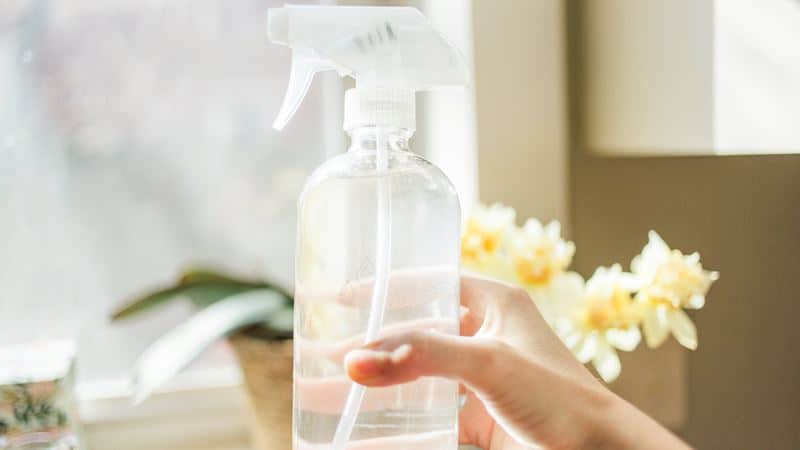
Dish soap and water: Mix a few drops of dish soap with water in a spray bottle. Spray this mixture all over the plant–on leaves, the stem, and the soil. Leave the spray on the plant for an hour or two to kill off the gnats. Then “rinse off” the soap by spraying the plant with plain water. Rubbing alcohol and water: Mix one cup of rubbing alcohol with one liter of water (or more if you think the mixture will be hard on your plants). Put the mixture into a spray bottle. Spray the plants and soil every three days for two weeks.
Another neat trick is the oil trap. Put a little vegetable oil around your kitchen sink drain. Gnats hanging out there will become coated with the oil and unable to breed.
Overripe bananas and fruit attract gnats, but use rotting fruit to your advantage!
You’ll need:
The fragrance of overripe or rotting bananas (or other fruits) lure gnats into the trap. They climb through the cover’s holes into the container to reach the fruit, but then can’t fly back out. Instead, they fall back into the soapy water and drown.
If you have only one container, don’t worry. A more streamlined variation is placing the overripe fruit in a single container, placing plastic wrap over the opening, and punching small holes in the wrap. Gnats will still be drawn to the fruit’s vapors, enter the container, but not be able to leave.
To see this method in action, watch this demonstration.
To set this natural, handy trap, cut a few potato slices (about 1” long, 1” wide and ½” thick) and bury them in the soil under the infected plant. Larvae already present in the soil gravitate to the potato for feeding. When you remove the potato slices 48 to 72 hours later, voilà (and slightly gross)–you’ll pull out many wriggling larvae with the slices.
If you see only a few gnats and want a little target practice, gather:
Mix together the first three ingredients and pour the mixture into the spray bottle. Then spray at a flying gnat and zap! You’ve killed the gnat and gotten some exercise without harming any indoor plants (unless you stepped on a plant in the process).
Many users swear by these low-maintenance, no-sweat sticky paper traps. Drawn to the color yellow, gnats fly into and then find themselves stuck to these traps, which are easy to find at your local garden store. Here is an example.
You should always:
Place the paper traps where you see many gnats. Hang them on or around plants. Hopefully, after a couple of days, the yellow paper trap will be filled up with dead gnats. Just switch it out for a new, fresh trap.
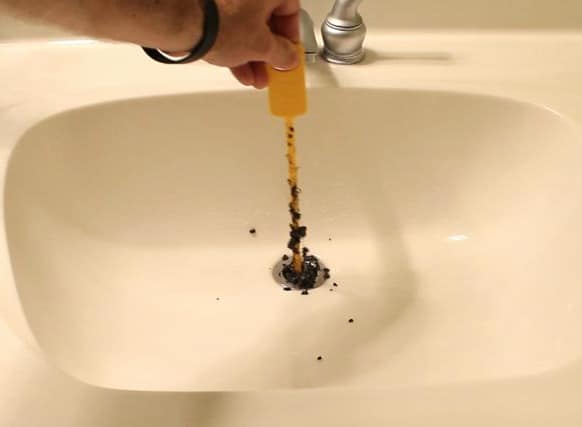
When you see gnats hovering around the drain, try this method:
What says class better than a feces pun proudly displayed in your guest bathroom? This lavatory mist features jasmine and red tea, but the real star is the image of Pootin sitting on his horse, with a caption above him saying “I cover your filthy secrets. I bring odor to its knees”.
You’re really not supposed to drink more than a glass of wine, but you feel like you could gulp down the entire bottle? This wine glass was made to help with that exact problem! Big enough to hold a whole bottle, this glass has I Only Have Time for ONE Glass of Wine written on it in huge, block letters.
Make sure no one ever comes near your spare keys! Let’s face it – doormats and flower pots don’t make for the best hiding spots. After all, it’s where everybody keeps them. But hiding them inside fake, but realistic dog poop will surely do the trick of repelling potential thieves.
If your cat could talk, you’d definitely get into trouble for buying this. But she can’t, so you can go about your business, trying to make your loved ones think she can. This gift box is empty, but it features images of the animal translator collar that’s allegedly inside.
If regular journal keeping just isn’t something you can see yourself doing, Keri Smith has the right task for you. In Wreck This Journal, she invites you to poke holes through pages, deface scrapbook photos, and the like. If you’re wondering what exactly you’d end up with, you know what to do.
Be the author of the next book you’ll read. If that sounds interesting, get your hands on Finish This Book, the work of bestselling author Keri Smith and, of course, yourself. You’ll start by undergoing secret intelligence training, but nobody really knows where your journey will take you.
There’s no way to track time that’s quite as mesmerizingly beautiful as with this unique hourglass. Placed on an elegant wooden base, it uses a hidden magnet to pull down ferrous sand. While falling, the sand creates lovely stalagmites you can admire for a lot longer than the one-minute countdown.
Take your gaming sessions to a whole other level by using a great-looking, high-performance keyboard. Its top-quality injection molded keycaps make it perfect for gamers, programmers and writers alike. LED effects with three different brightness settings add a touch of cool to your devices.
Learn how to take truly stunning photos without having to memorize any technical terms. This book contains only information that’s useful to you when you’re ready to snap that perfect shot. Not to mention that it’s packed with gorgeous examples of professional photography.
If clothes make the man, do they make pets, too? If so, you’re in for a real treat! This cat outfit includes a sheriff onesie and a hat with a badge. They’re easy to put on, so you don’t have to worry about your pet getting mad at you. And then they can go exercise their right to boss everyone around.
Let Pikachu follow you wherever you go, just like he did with Ash! This eye-catching hat features the face of the adorable Pikachu, with his ears sticking out to make an even bigger impression. Since it has a snap closure, it can fit kids of all ages and, yes, adults, too.
Now you can finally realize your lifelong dream of becoming the ultimate bird watcher slash opera goer slash intelligence agent! You only need to have these mini binoculars on hand wherever you go. Since you won’t damage them by getting them wet, nothing’s out of bounds!
Give the universe a lick with this unique mix of lollipops. The back of each is black, resembling the outer space, while the front is clear, adding depth to the image. They come in a range of flavors, so there’s something for everyone. Serve these at your next space party or devour the cosmos yourself!
Give your friends and family a proper scare when they least expect it! With the help of this mix of decals, you can turn your toilet into a place from which emerge yucky octopus tentacles and even decomposing zombie hands. Simply stick them onto the seat and cover, and wait to hear the first screams!
Make sure your next camping trip doesn’t get interrupted by any sudden deaths. Bringing the world’s toughest tent should be more than enough. Made from thick, tear-resistant materials and easily packable into the tiniest bag, it’s the ideal companion for two people embarking on a dangerous trip.
Turn your backyard into a real amusement park with this incredible water slide! Twenty five feet long and equipped with sprinklers, it’s perfectly capable of entertaining your entire family. Since it’s made of embossed PVC, you don’t even need to add soap to achieve smooth rides.
Drinking only one cup of coffee a day has finally been made possible! Big enough to hold 64 ounces of liquid, this mug is the ideal gift for that one friend who can’t seem to stop drinking coffee, but if they don’t like it, you can also use it as a container for, well, 64 ounces of stuff.
What better way to cool off than by having a unicorn spray you with water from his magic horn? This huge inflatable toy unicorn doubles as a sprinkler for hot summers. Compatible with most garden hoses, it makes playing in the yard super fun for the entire family. Or just yourself – no one’s judging.
If there ever were a marathon in writing stuff by hand, you’d be the first one to cross your t’s and dot your i’s. Designed to minimize the strain on your fingers and hand, this pen fits snugly, yet comfortably around your index finger. As a result, you need to put in less effort to actually do the writing.
Had enough of classic LEGO building kits? Okay, it sounds completely absurd now that we say it, but you might still have a lot of fun building a ship in a bottle using only LEGOs. The kit includes everything from the bottle and wax seal elements to the ship with all its parts. Anchors aweigh!
If mixing household items and making traps sounds like too much effort…
Good news!
There’s an even easier way.
The next level of DIY gnat extermination without chemicals is an electric insect trap. Bestazy’s article, 12 Notable Mosquito Trap Reviews – Selecting An Effective Insect Trap In 2018, describes several different safe models for indoor use.
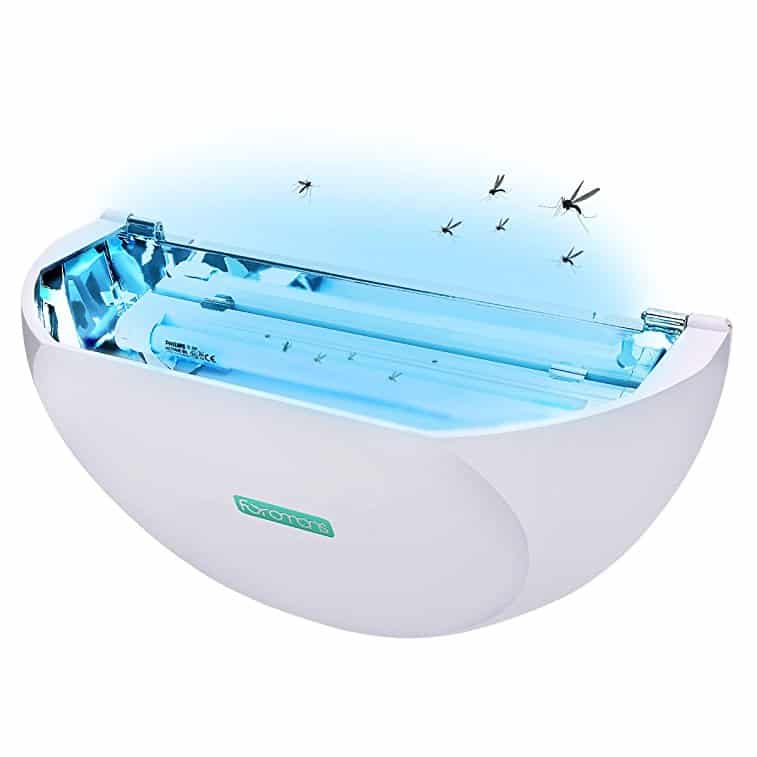
For a decorative touch, try the stylish Wall Sconce Flying Insect Fly Light Trap.
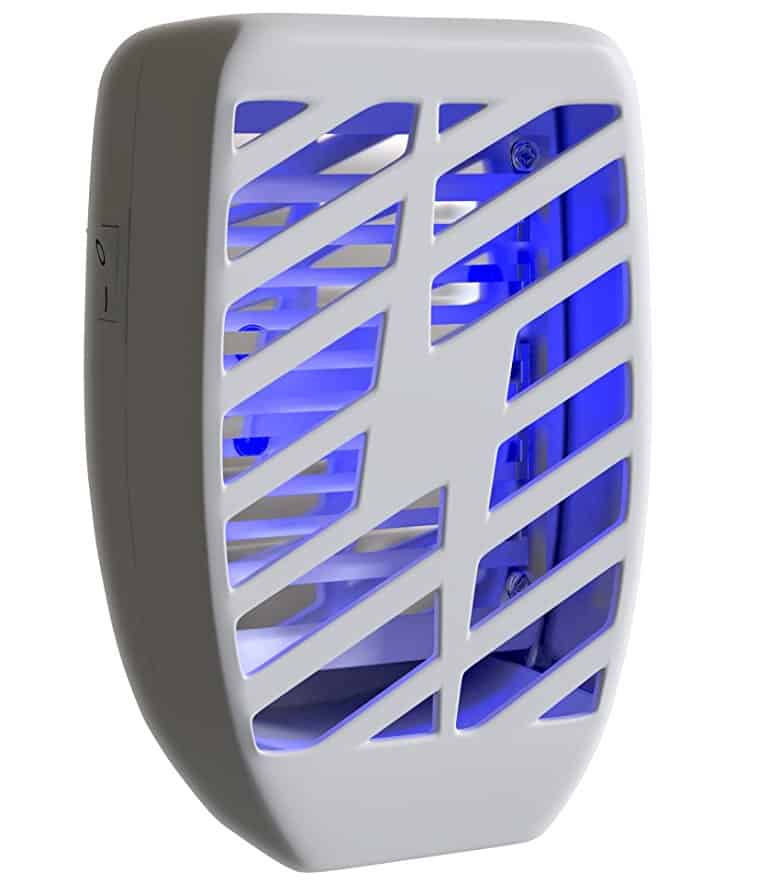
For sound slumber, use the very quiet, plug-in Sleep Better with SANIA Electronic Mosquito Zapper.
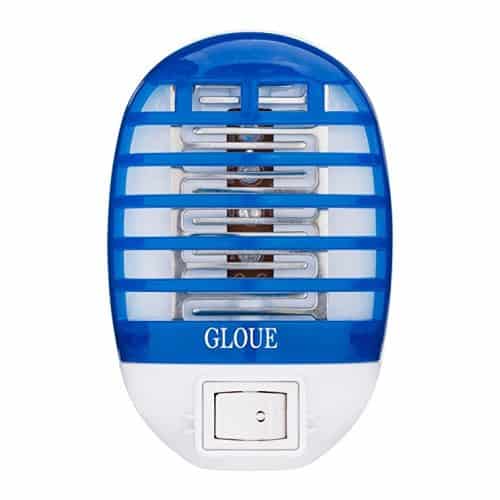
For easy, plug-in use, try the compact GLOUE Bug Zapper.
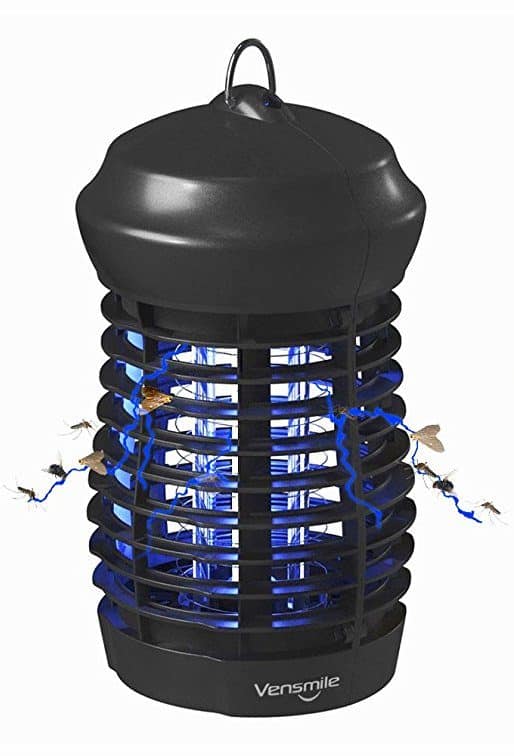
For a lantern-shaped model, use the VENSMILE Electric Fly Traps Bug Zapper.
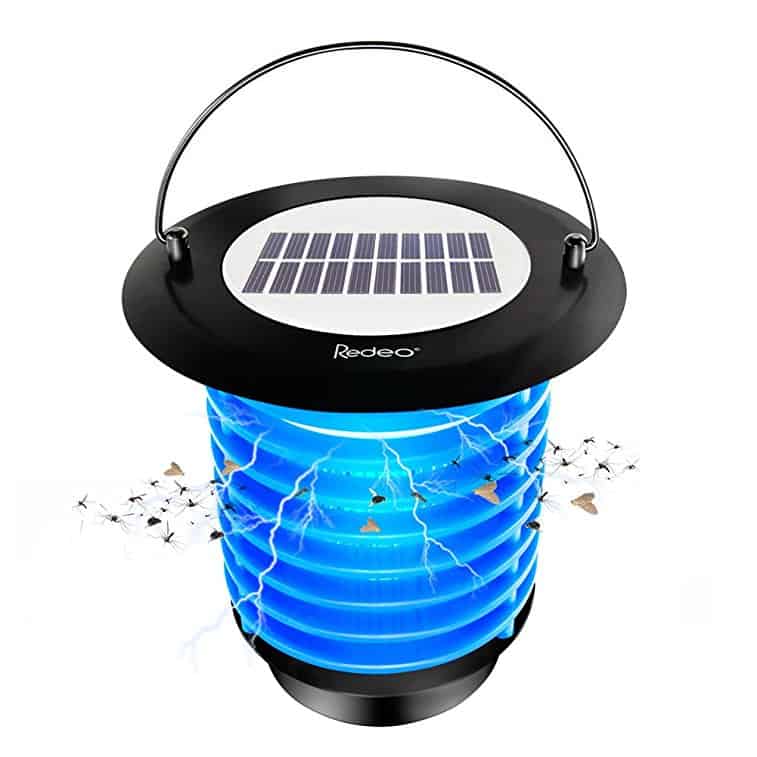
Although designed mostly for outdoor use, we wanted to mention the Redeo Solar Bug Zapper Fly Trap and Garden Lamp Night Lightbecause it is solar powered and convenient to use.
Whichever trap you choose, before you venture forth to capture the gnats, you’ll want to
1) make sure the bugs are actually gnats and
2) figure out where they are coming from
Let’s break it down:
Smaller than fruit flies, these tiny black insects are often mistaken for mosquitos. Only about 1/16” long, adult fungus gnats have dark thin bodies and very long legs. A fungus gnat larva is very small, pale white (almost translucent) with a black head, and resembles a worm.
Larvae live in very damp conditions where they feed on decaying plant material, moist organic matter, and fungi.
Attracted to light, adult gnats may appear flying near windows. As weak fliers, though, gnats may also be found resting on plants, soil, windows, window sills, or walls. Larvae thrive in moist plant pots.
No wonder fungus gnats love being around overwatered houseplants. They lay their eggs in the potting soil, where larvae hatch, feed, and grow. So the first source to check is any houseplant.
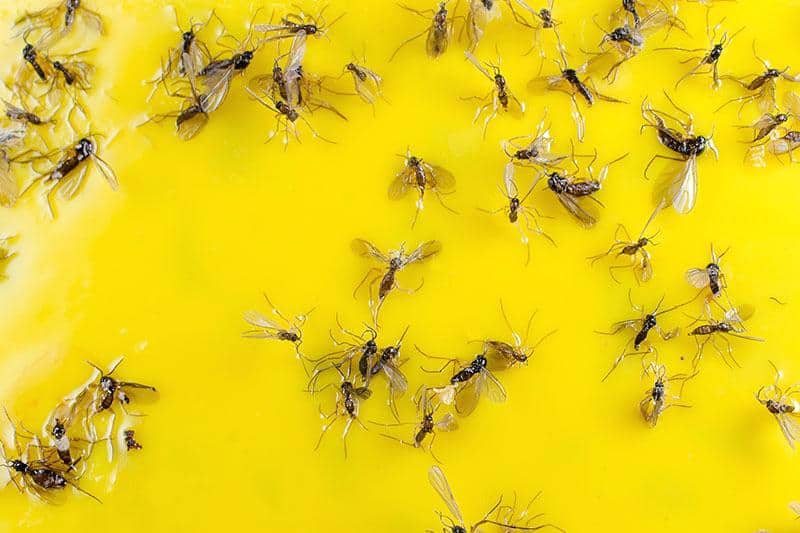
Of course, ideally, you wouldn’t even need to employ any of the above-listed methods for getting rid of gnats. An ounce of prevention is worth a pound of cure! Try this to In order to prevent gnat infestations in the first place.:
Have you been plagued by gnats? Reluctant to call in the big guns (chemicals or pest control)? Investigate these DIY methods and/or the suggested electric insect traps to learn how to get rid of gnats in and around your home. If your house is overwhelmingly infested with gnats, however, you may need to call in the professionals.
Have you ever tried any of the listed DIY methods or electric insect traps? Have they worked for you? We’d love to hear what worked and what didn’t. If you have any comments or additional tips, please let us know.
As we’ve discussed, gnats are drawn to moisture. Unfortunately, they also are attracted to your body heat and the carbon dioxide from your mouth and nose when you exhale.
Yes, especially wet pet food. Don’t forget to clean and dry your pet’s food bowl after meals.
Fruit flies are larger than gnats and have yellow-to-tan bodies with red eyes. Gnats have very dark bodies and long, thin legs.



Let us know your opinion